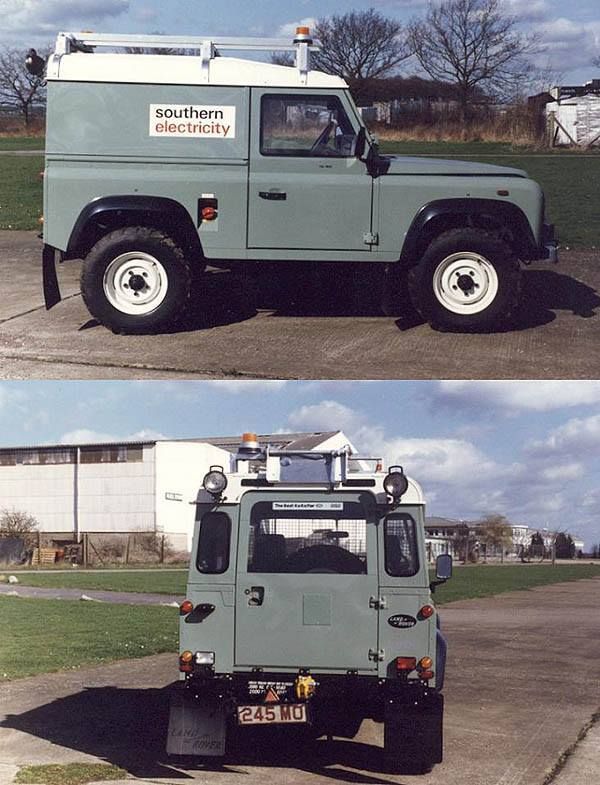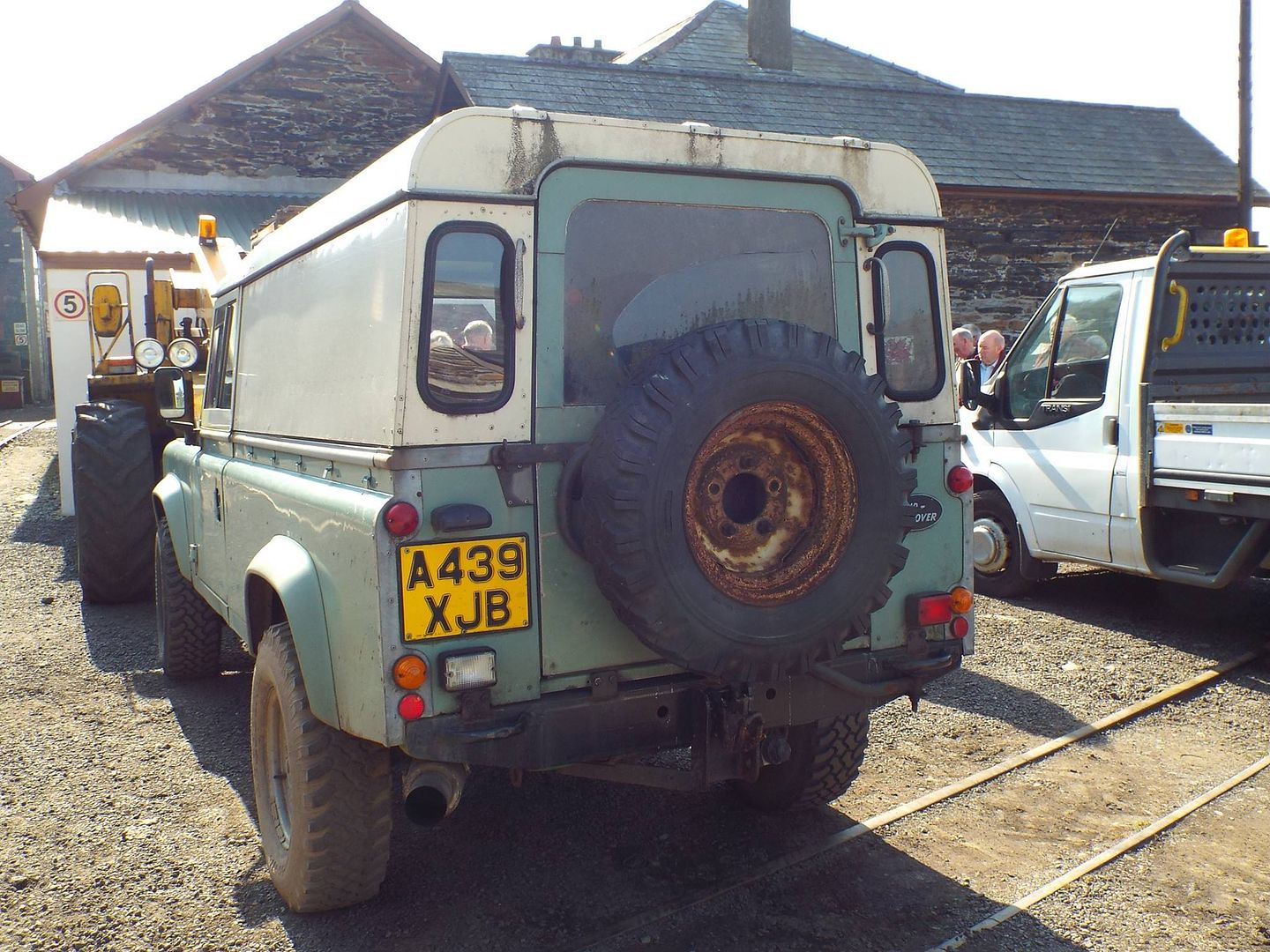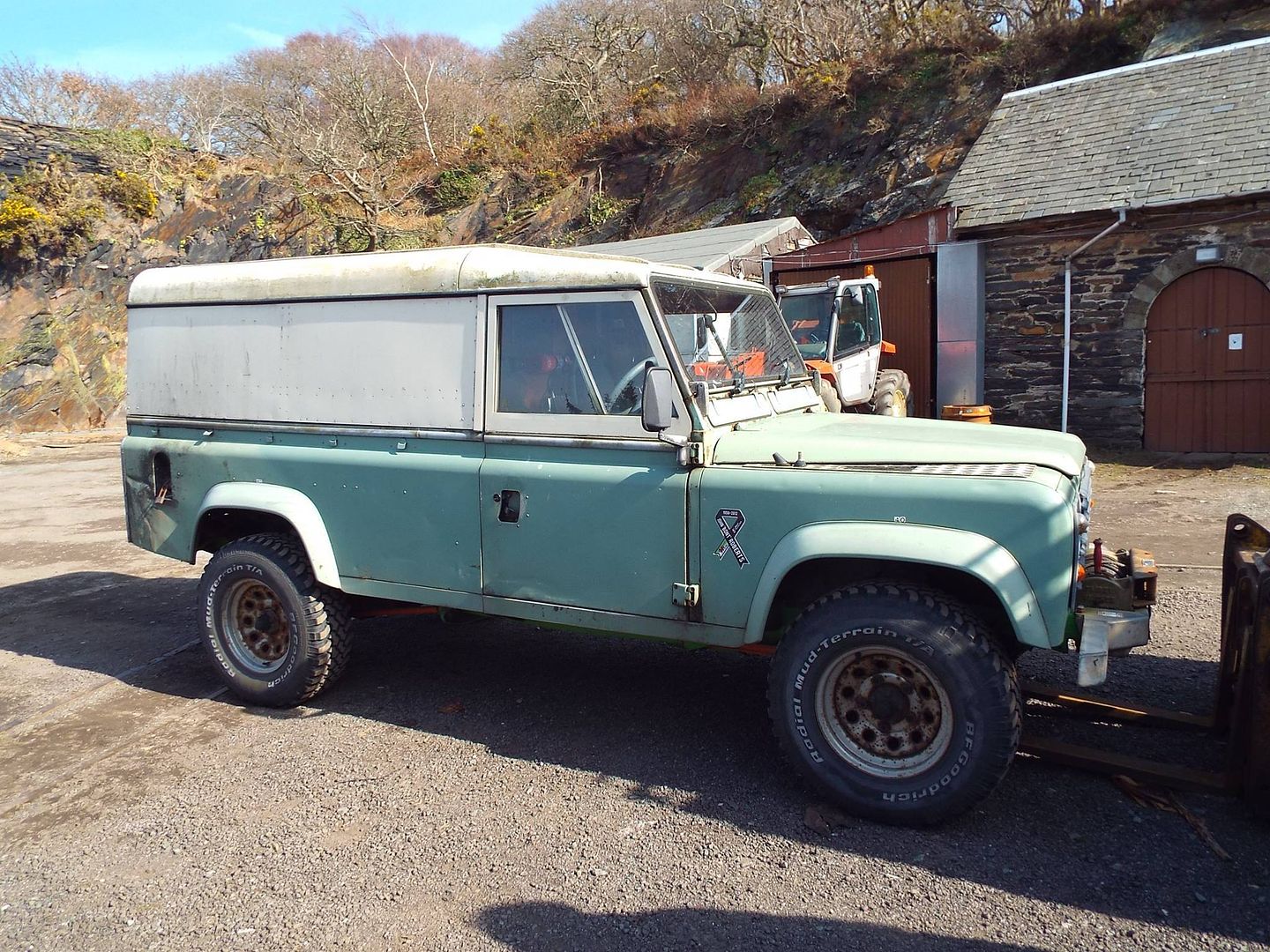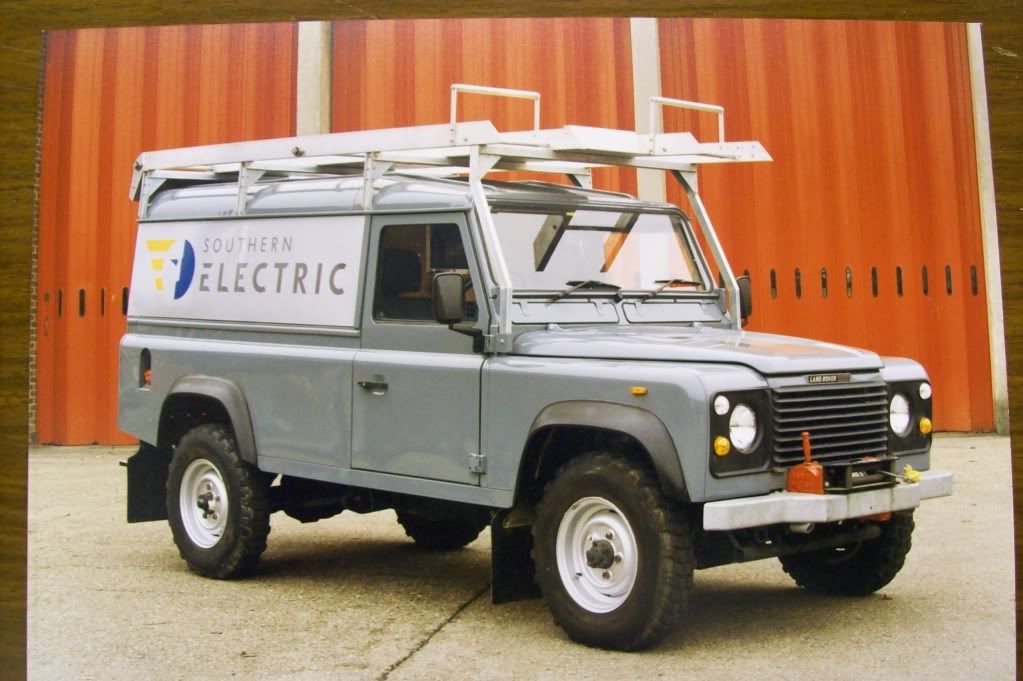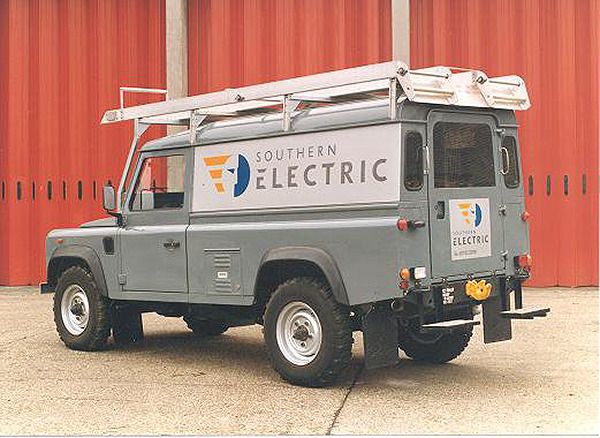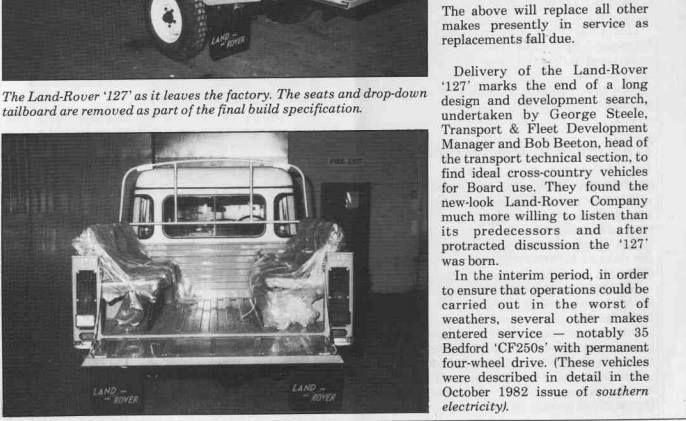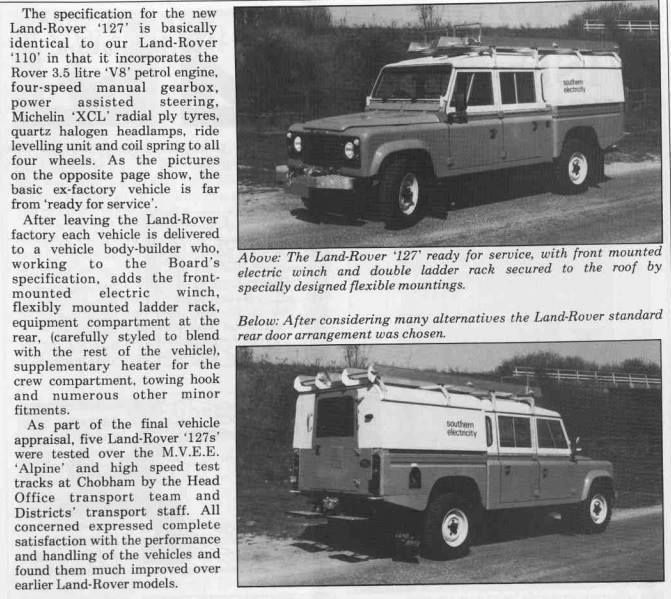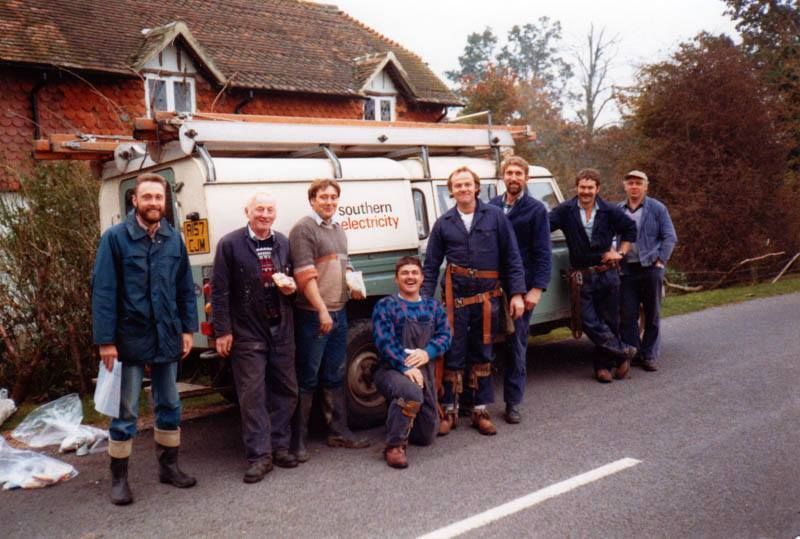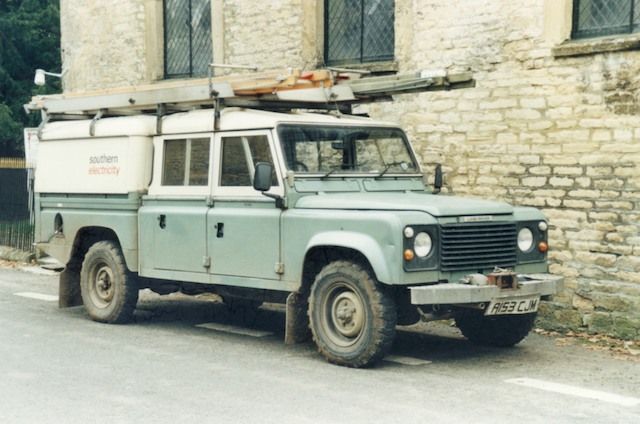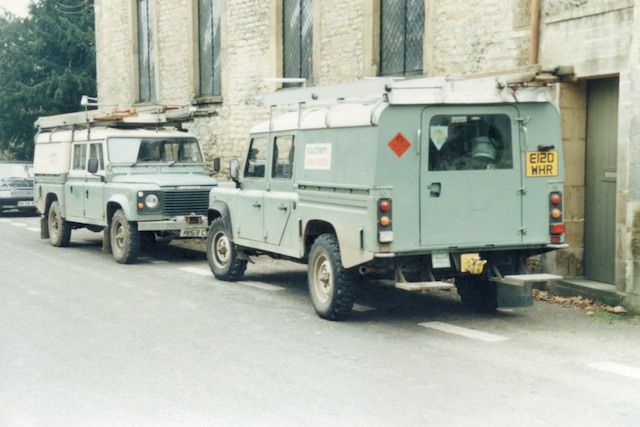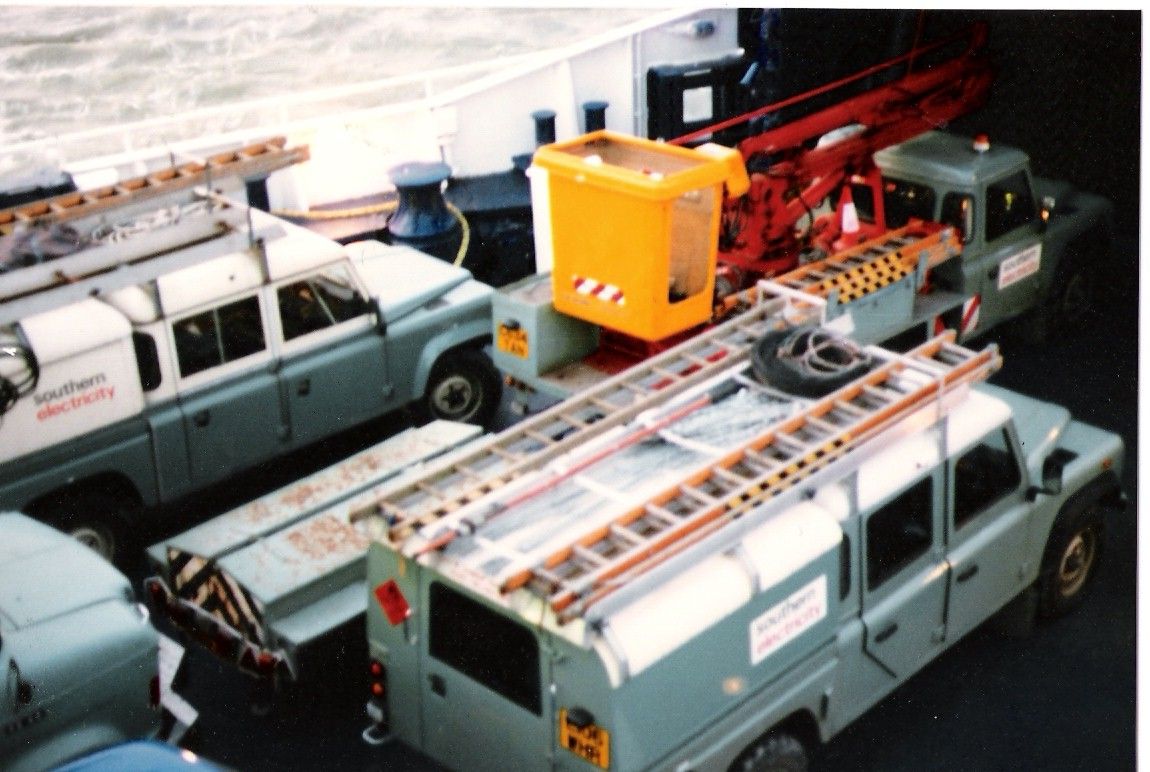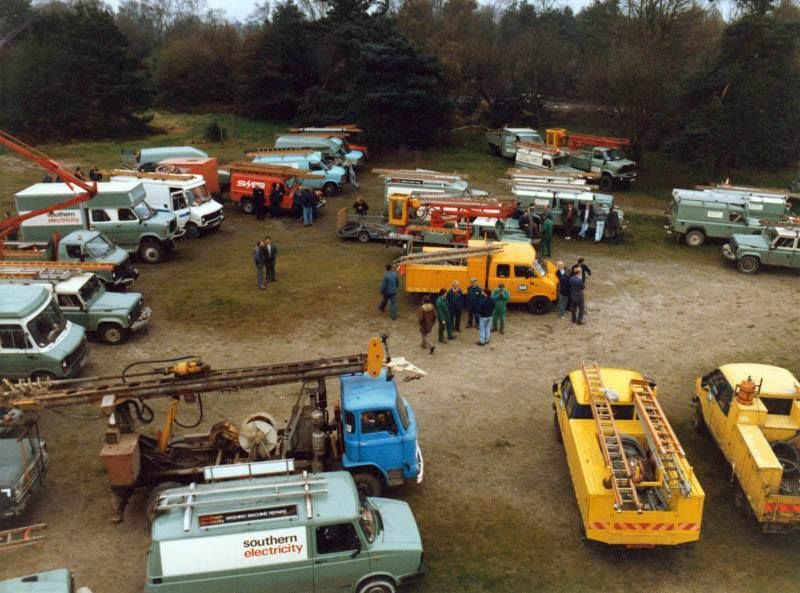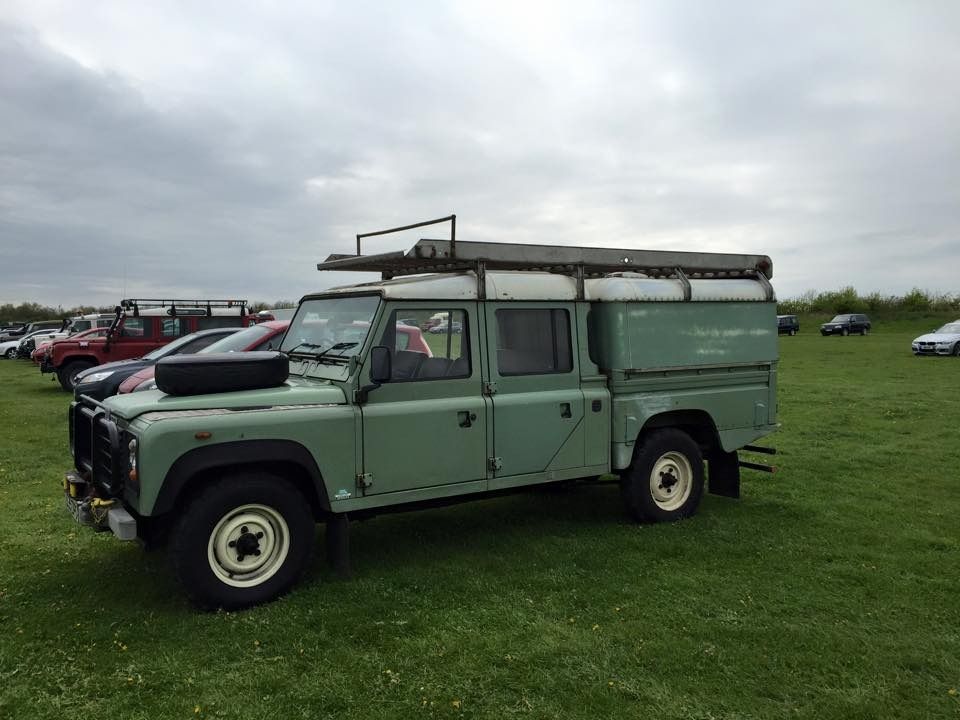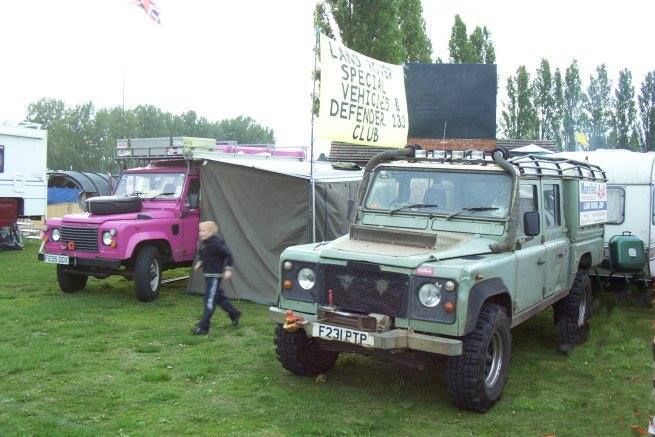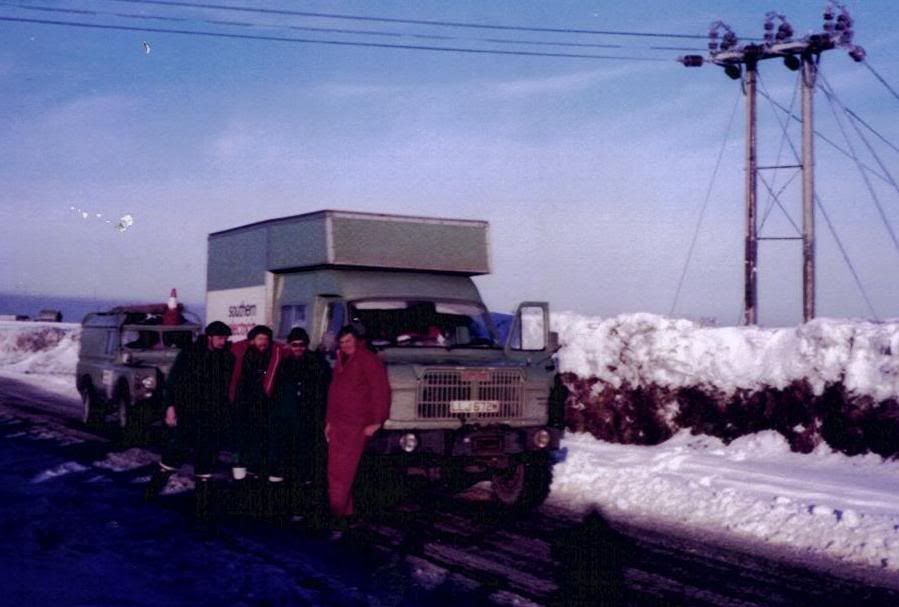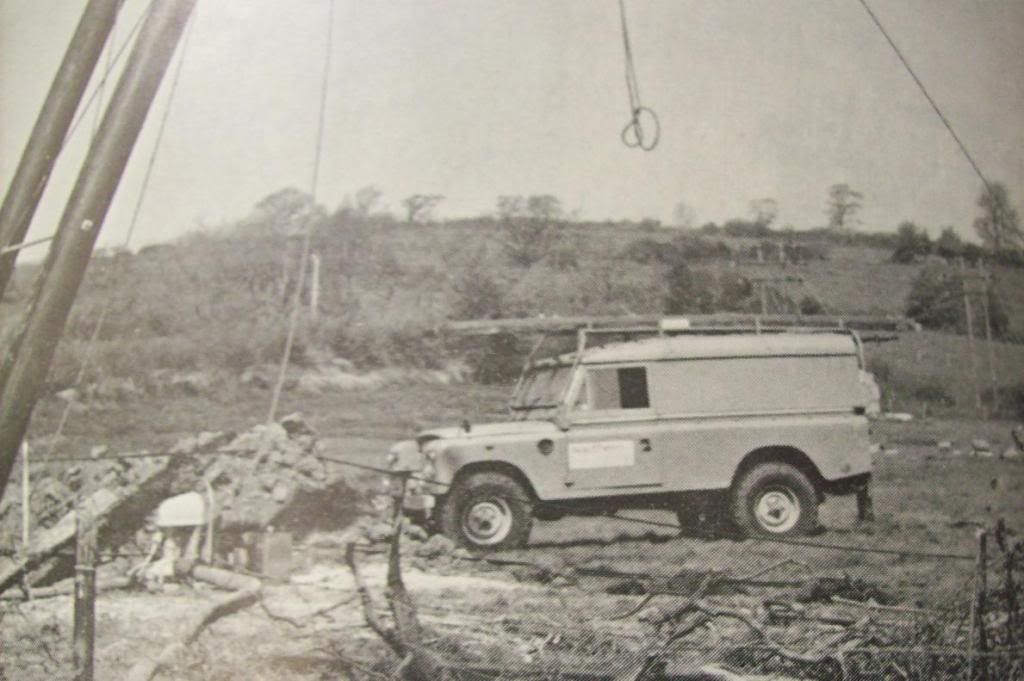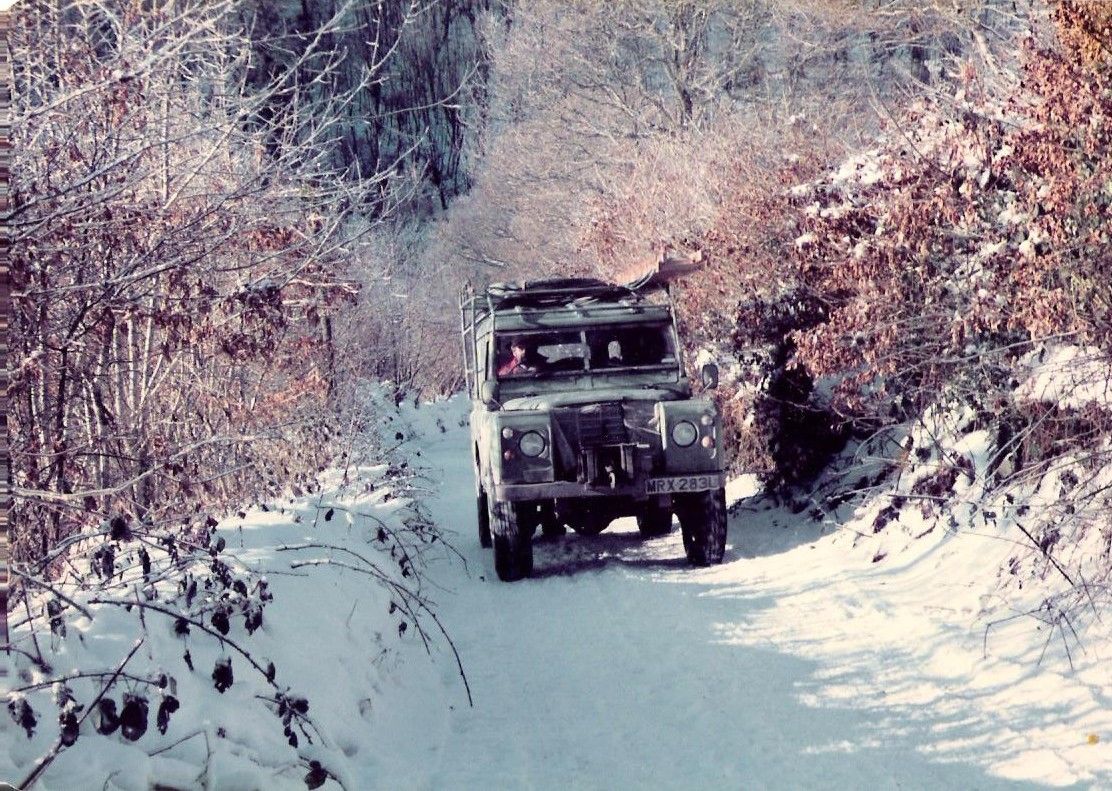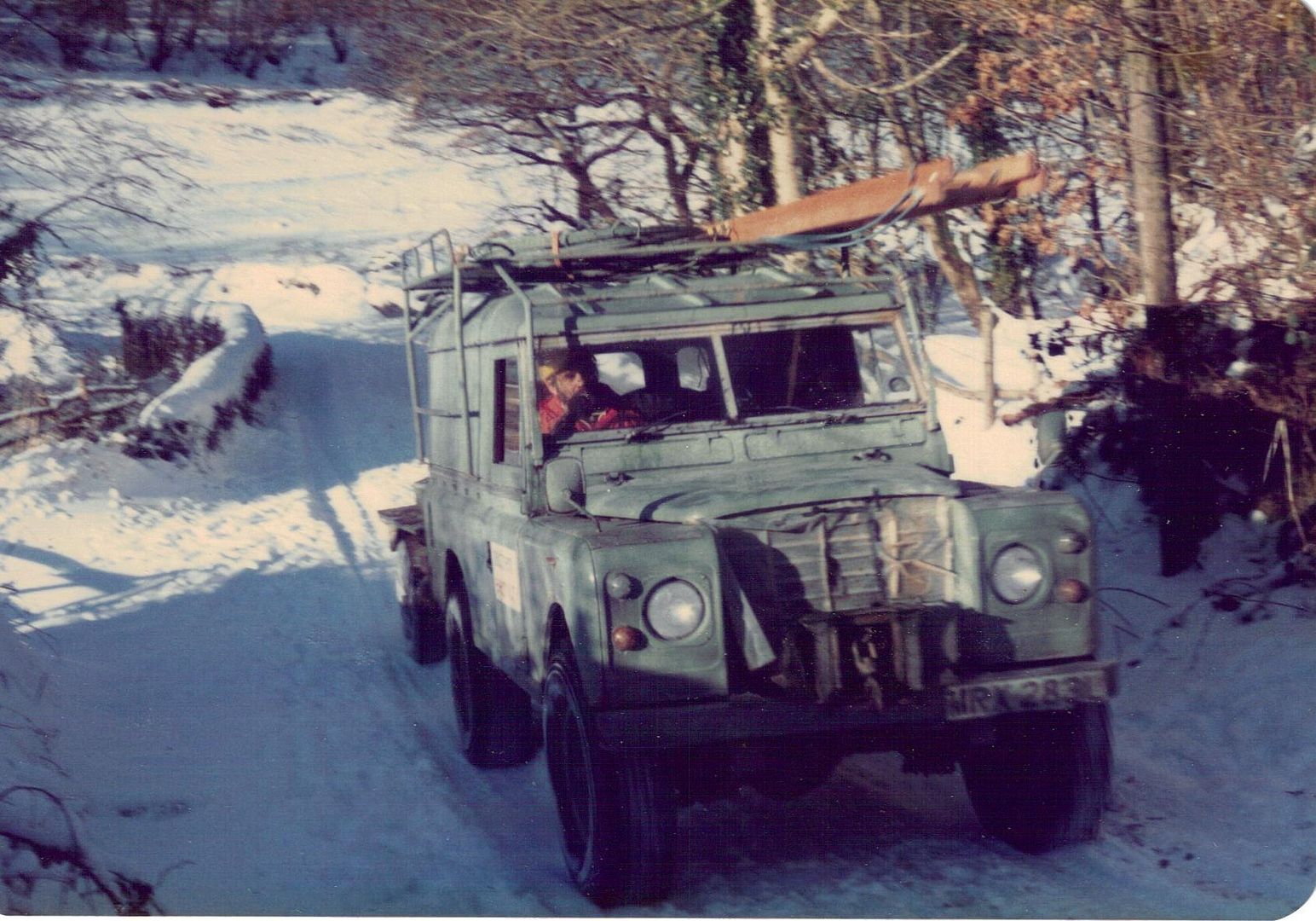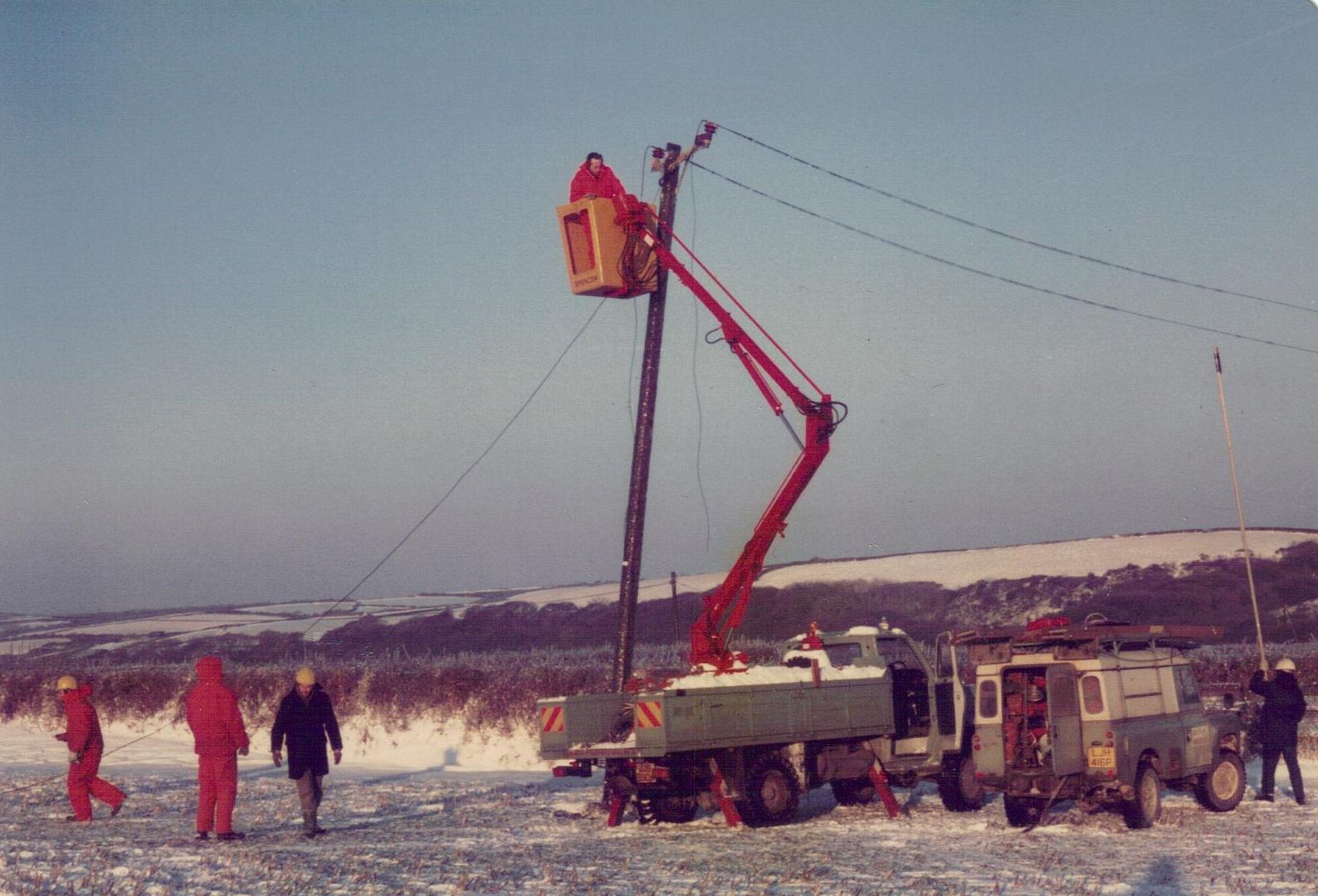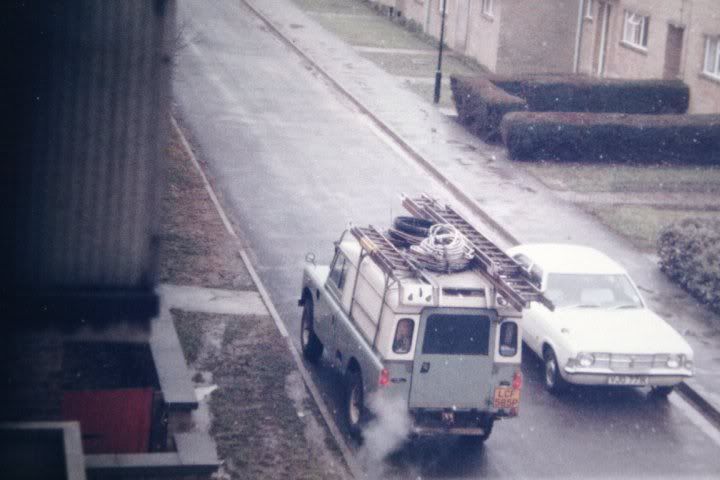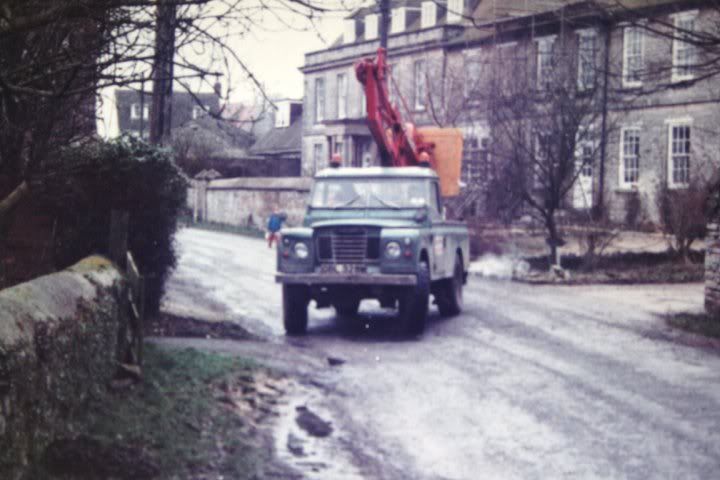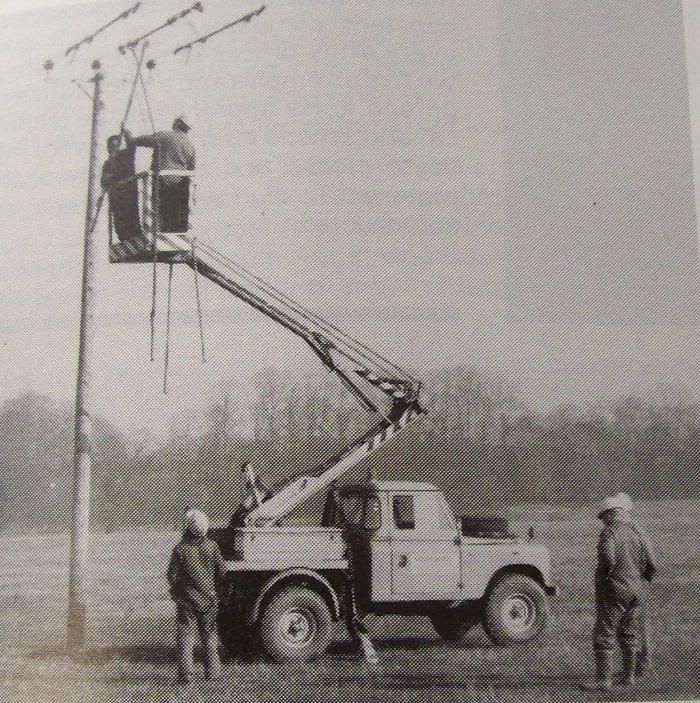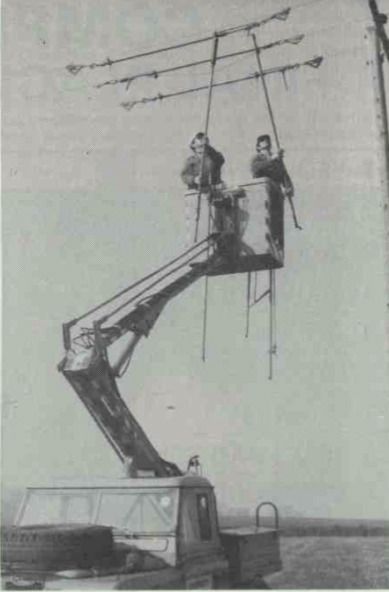SEB took on all coil-sprung models of Land Rover, 90s apparently as chargehand or engineers vehicles, with the 110 and 127 as overhead line crew vehicles.
The 90 and 110 did not change too much in the early years, but the 127 did get a change to the rear doors after about 12 months production, from square bottomed rear doors to using the same doors as on a 110 station wagon. The 110 was also updated at the same time to the one-piece doors with winding windows. The 90 was never sold with split doors, as the 110 and 127 were on sale for about a year before the 90 was introduced.
An early 90 hard top.
A 90 hard top with the 2.5 Turbo diesel engine.
Few photos exist of SEB 110s, however this ex-SEB vehicle gives some idea of the in-service appearance.
This 110 is seen in the post-1989 colour scheme. It was originally a green vehicle.
The following is a reproduction of an article in the SEB staff magazine about the 127 and other new Land Rovers.
An early 127 in use on storm repair work.
An early 127" based at Oxford, showing the square-bottomed rear door.
Compare with this photo showing a slightly later vehicle, which also has the later door handles.
This photo of vehicles on the ferry to the Isle of Wight also shows the early and later types.
However there was an intermediate type with the cut off doors but lift-up door handles.
This special-bodied 127 was an IT fitters vehicle.
This photo taken on a multi-board storm repair job shows several early 110 and 127s in use with SEB. Notice the slight variations in colour scheme.
This mid-80s example of a 127 has survived with few changes into the present day...
...whilst some became off-road monsters.
The 127 was renamed the 130 as part of the "Defender" re-brand in 1990/1, but the vehicle itself was little changed, This was one of the last to go to Southern Electricity before they became SSE, and was powered by the Tdi engine. Similar vehicles are still in use today.

